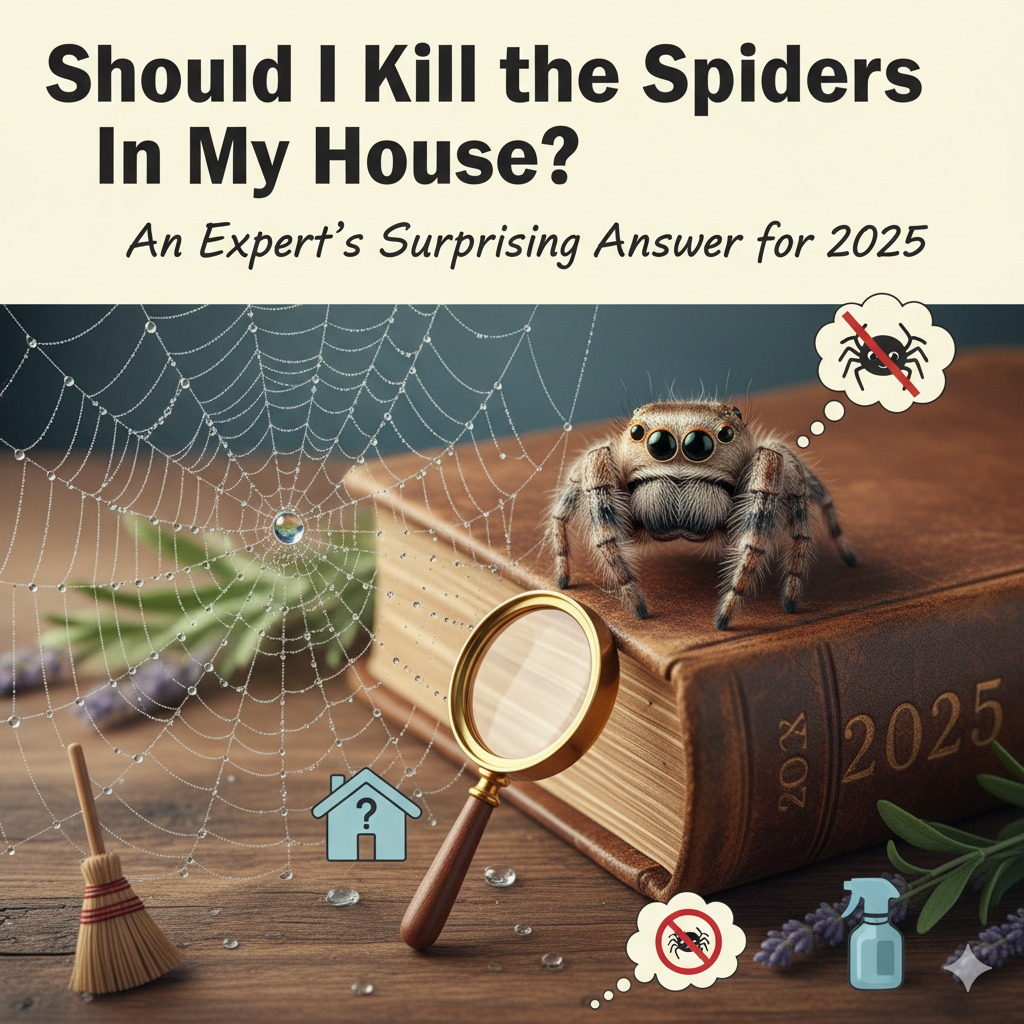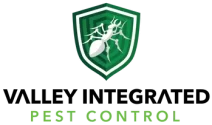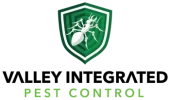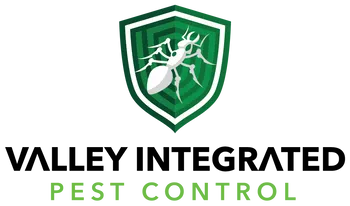The vast majority of spiders in your house are not dangerous; they are a free, 24/7 pest control service and a key indicator of your home’s hidden ecosystem. Instead of asking if they are a threat, the more valuable question is what they are doing for you and what their presence reveals about other, more problematic pests.
The Misunderstood Role of Your Eight-Legged Roommate
Finding a spider scuttling across the floor or lurking in a corner of your home often triggers an immediate, primal response: fear. The question “Are the spiders in my house dangerous?” is one of the most common queries we receive as pest management professionals. This fear is understandable, fueled by horror movies and startling pictures of infected spider bite cases online. However, with over two decades of experience in residential spider management, I can reassure you that this fear is largely misplaced. Most of the spiders you encounter indoors are not only harmless to you, your children, and your pets, but they are also your allies in the fight against actual pests.
To truly understand the situation, we need to shift our perspective. Let’s move beyond the initial alarm and look at what’s really happening in the ecosystem of your home.
‘Venomous’ Isn’t the Same as ‘Dangerous’
One of the biggest sources of confusion is the difference between poisonous and venomous spiders, and more importantly, between “venomous” and “dangerous.” A creature is poisonous if it’s harmful to ingest, like a poison dart frog. Spiders, on the other hand, are venomous—they inject a toxin. Here’s the critical distinction: nearly all spiders are venomous to some extent, yet very few are harmful to people. This is because their venom is a highly specialized tool, evolved over millions of years for a very specific purpose: to paralyze small invertebrate prey.
The neurotoxin of a common house spider is incredibly effective on a housefly, mosquito, or cockroach nymph. To a human, however, the volume and chemical makeup of that venom are medically insignificant. In the rare event that a common house spider bites a person—almost always in self-defense when it’s being crushed—the reaction is typically less severe than a mosquito bite. You might see a small, red bump that itches for a bit and then disappears. An allergic reaction to a spider bite is possible, but it is exceedingly rare.

Designed for Your Home, Not Lost In It
Another common misconception is that the spider you find in your basement or garage is a lost wanderer from the outdoors. While some spiders do occasionally stray inside, many of the species you see are what we call “synanthropic,” meaning they have evolved to live alongside humans. Your home provides the perfect environment for them: it’s climate-controlled, sheltered from predators, and most importantly, it contains a reliable food source.
Spiders like the cellar spider (often called “daddy long legs”) or the common house spider aren’t looking for a way out. They are actively seeking dark, undisturbed corners of your house—your cellar, attic, garage, or the space behind your furniture—to build their webs and live out their lives. They are, for all intents and purposes, your permanent, silent roommates.
Spiders as Nature’s Pest Control Service
So, what are these roommates doing all day? They’re working. The single greatest benefit of having a stable, non-dangerous spider population in your home is the free, non-toxic, and continuous pest control they provide. They are your first line of defense against insects that are genuinely problematic.
What’s on a House Spider’s Menu?
Before you decide to get rid of spiders in your house for good, consider what they’re eating. The diet of your average house spider is a who’s who of nuisance and disease-carrying pests. For example, the prey of the common house spider (Parasteatoda tepidariorum) usually consists of household insects and other invertebrates, many of which are considered pests. Their menu often includes:
- Mosquitoes (carriers of West Nile Virus, Zika)
- Houseflies (carriers of over 100 pathogens)
- Cockroach nymphs
- Earwigs
- Moths
- Ants
- Silverfish
Some spiders are even specialist hunters. The Woodlouse spider, with its intimidating fangs, looks far more dangerous than it is. Its diet consists principally of woodlice (rolly-pollies), but also includes silverfish, earwigs, millipedes, and crickets. By removing these spiders, you may inadvertently be allowing populations of these other pests to grow unchecked.
The Spider as a Bio-Indicator: What They Reveal About Your Home
Perhaps the most valuable role a spider plays is that of a bio-indicator. If you suddenly notice an increase in spider activity or see numerous webs, your first thought shouldn’t be, “I have a spider infestation.” It should be, “What are all these spiders eating?”
The presence of spiders reveals a larger, often unseen, insect population in your home. They are a symptom, not the root cause. Spiders go where the food is. An abundance of spiders in your basement could signal a moisture issue attracting other bugs. Lots of webs around windows and doors might mean you have gaps in your seals that allow flies and gnats to enter. In this way, spiders are actively signaling a pest problem they are trying to solve for you. Effective spider management for residential properties isn’t just about removing the spiders; it’s about addressing what attracts them in the first place.
A Balanced View: Threat vs. Tenant
Understanding the role of spiders requires weighing the actual risk against their benefits. The emotional desire for a pest-free home is a powerful and valid factor, but it should be informed by the reality of the situation.
| Spiders as a Perceived Threat | Spiders as a Beneficial Tenant |
|---|---|
| The Fear Factor: Their appearance can be alarming, and arachnophobia is a real and significant anxiety for many people. The sight of a spider can cause genuine distress. | Natural Pest Control: They actively hunt and consume disease-carrying and nuisance pests like mosquitoes, flies, and cockroaches, reducing your exposure to them. |
| The “What If” Risk: While incredibly rare, bites from medically significant spiders like the black widow or brown recluse can occur and require medical attention. | Bio-Indicator: Their population size and location provide valuable clues about other pest issues and potential entry points in your home’s structure. |
| Messy Webs: Some spiders, like the common house spider, create messy webs that can accumulate dust and look unsightly, requiring regular cleaning. | Non-Toxic Solution: They provide continuous pest management without the need for chemical sprays, which is safer for children and pets. |
| Potential for Misidentification: It can be difficult for an untrained eye to distinguish a harmless brown spider from a dangerous brown recluse, leading to anxiety. | They Want to Be Left Alone: House spiders are reclusive and non-aggressive. They will not seek out humans to bite and prefer to remain hidden. |
Identifying Common Household Spiders: Who to Watch and Who to Welcome
Knowledge is the best tool for peace of mind. Learning how to identify a dangerous spider from a harmless one can transform your relationship with these creatures. For a definitive answer, a local pest control expert is your best resource, but here is a basic guide.
Medically Significant Spiders in the U.S. (The Short List)
In North America, only two types of spiders are considered medically significant to humans. If you suspect you have found one of these, you should exercise caution.
- The Widow Spiders (Latrodectus species): The most famous is the black widow. Look for a shiny, black, bulbous body with a distinct red or orange hourglass shape on the underside of the abdomen. Are baby black widows venomous? Yes, they are venomous from birth. They prefer dark, cluttered, and undisturbed areas like woodpiles, sheds, garages, and basements. A bite can cause severe muscle pain, cramping, and nausea, and requires medical attention.
- The Recluse Spiders (Loxosceles species): The brown recluse is tan to dark brown and is best identified by the violin- or fiddle-shaped marking on its back, with the “neck” of the violin pointing toward the abdomen. They also have a unique eye pattern of six eyes arranged in pairs, but this is difficult to see without magnification. Their venom is necrotic, meaning it can cause tissue death around the bite site. Symptoms of a brown recluse bite can take hours to develop. If you’re trying to figure out how to tell if a spider is a brown recluse, this violin marking is the key identifier.
Common and Harmless House Spiders (The Long List)
This group represents over 99% of the spiders you will ever encounter in your home. Here are a few common non-dangerous house spiders:
- Cellar Spiders (Pholcidae): Often called “daddy long legs,” these spiders have tiny bodies and long, delicate legs. Are daddy long legs in the house dangerous? Absolutely not. Their venom is extremely weak, and their fangs are too small to pierce human skin effectively. They are excellent at catching mosquitoes and other small flies.
- Common House Spiders (Parasteatoda tepidariorum): These are the architects of those messy, tangled webs in corners. They are typically a mottled brown color and are incredibly timid. Can a common house spider bite hurt you? It’s highly unlikely to bite, and if it did, the effect would be negligible.
- Jumping Spiders (Salticidae): Small, often colorful, and curious, these spiders have excellent vision and hunt actively rather than building webs. Are jumping spiders a threat in the home? Not at all. They are completely harmless to humans and are fascinating to watch as they stalk their prey.
- Wolf Spiders (Lycosidae): Often large and hairy, a wolf spider’s appearance can be intimidating, leading to questions like “are wolf spiders in the house dangerous?” While they can bite if provoked, their venom is not dangerous to humans, causing only localized pain and swelling. They are nomadic hunters and great at controlling larger pests like crickets and other spiders.
Answering Your Core Questions About Household Spiders
Let’s directly address the questions that are likely on your mind.
Should I worry about spiders in my house?
For the most part, no. You should view them as a sign of a healthy, if active, ecosystem. Their presence indicates that other bugs are present. Worry less about the spider and more about what it’s eating and how those primary pests are getting inside.
Are house spiders dangerous to humans?
Overwhelmingly, no. With the exception of positively identified Black Widows or Brown Recluses, the house spiders you encounter pose no threat. Even spiders that look scary, like the Black house spider (Badumna insignis), are venomous but not considered dangerous; they are timid and bites from them are infrequent.
Will the spider in my room leave me alone?
Yes. A spider’s entire existence is focused on two things: finding food (bugs) and avoiding predators (you). You are a giant, terrifying force in their world. They have no interest in you and will actively hide or flee from you. They do not seek out humans to bite.
Should I kill a spider if I see it in my house?
This is a personal choice. If its presence causes you significant anxiety, removing it is understandable. However, if you can tolerate it, letting it live provides you with a free, natural exterminator. The most common-sense approach is the “cup and card” method: safely trap the spider under a cup, slide a piece of paper underneath, and release it outside—far from the house if it makes you more comfortable.
Making the Right Choice for Your Needs
Ultimately, deciding on a course for spider control in your home depends on your personal comfort level and specific situation. There is no single “best” answer, only the right answer for you and your family.
For the Anxious Homeowner
If the sight of any spider causes you or your family members significant stress or anxiety (a condition known as arachnophobia), your peace of mind is the top priority. The ecological benefits are irrelevant if you feel unsafe in your own home. For you, the best path is professional intervention. A comprehensive pest control plan can create a spider-free environment, remove webs and egg sacs, and establish a protective barrier around your home to prevent re-entry. This provides immediate reassurance and allows you to feel secure again.
For the Eco-Conscious Pragmatist
You understand the balance of nature and are open to its benefits, but you still want to be safe. Your best approach is education and targeted action. Learn to confidently identify the few medically significant spiders in your area. Use our spider identification chart for homes as a starting point. For the 99% of harmless spiders, consider letting them be your partners in pest control. Focus your efforts on prevention: seal cracks and gaps, fix leaky pipes, and reduce clutter in your garage and basement. This reduces the primary pests that attract spiders in the first place, managing the situation naturally.
For the Concerned Parent/Pet Owner
Your main concern is child safety and the well-being of your pets. Curious toddlers and pets are more likely to accidentally disturb a spider, which could lead to a defensive bite. Your ideal strategy is creating a “safe zone.” Teach your children not to touch spiders. Regularly inspect and clean areas where your children or pets play, like floor corners, playrooms, and under furniture. For high-traffic areas, it’s wise to remove spiders and webs. In less-trafficked areas like the basement or attic, you can let them be. Consider pet-safe spider killer spray for targeted use, but a better long-term solution is a professional pest control plan that focuses on exclusion to keep both spiders and the pests they hunt out of living spaces.
Whether you see spiders as a terrifying threat or a helpful tenant, understanding their true role is the first step toward making a confident decision. The goal is not just a pest-free home, but a home where you feel comfortable and in control. A professional assessment can help you understand the unique pressures on your property and craft a solution that fits your specific needs and comfort level.
At Valley Integrated Pest Control, we believe in a comprehensive approach that prioritizes your peace of mind. With decades of experience serving homeowners, we don’t just eliminate pests; we diagnose the root cause of the problem to provide lasting solutions. For a personalized assessment of your home and a free quote on our residential spider treatment services, contact our expert team in Fresno, CA today. We’re here to restore your comfort and confidence.






